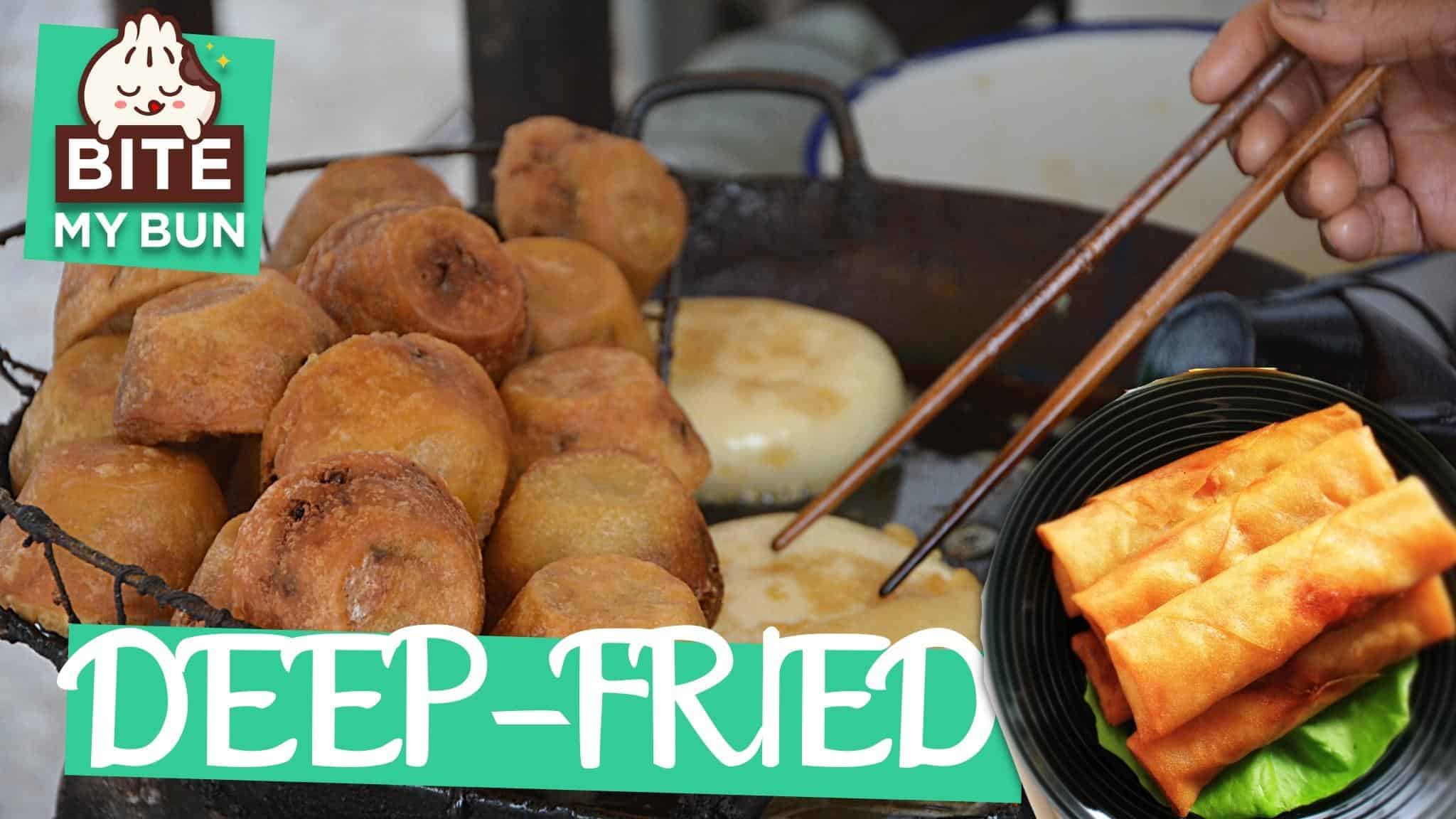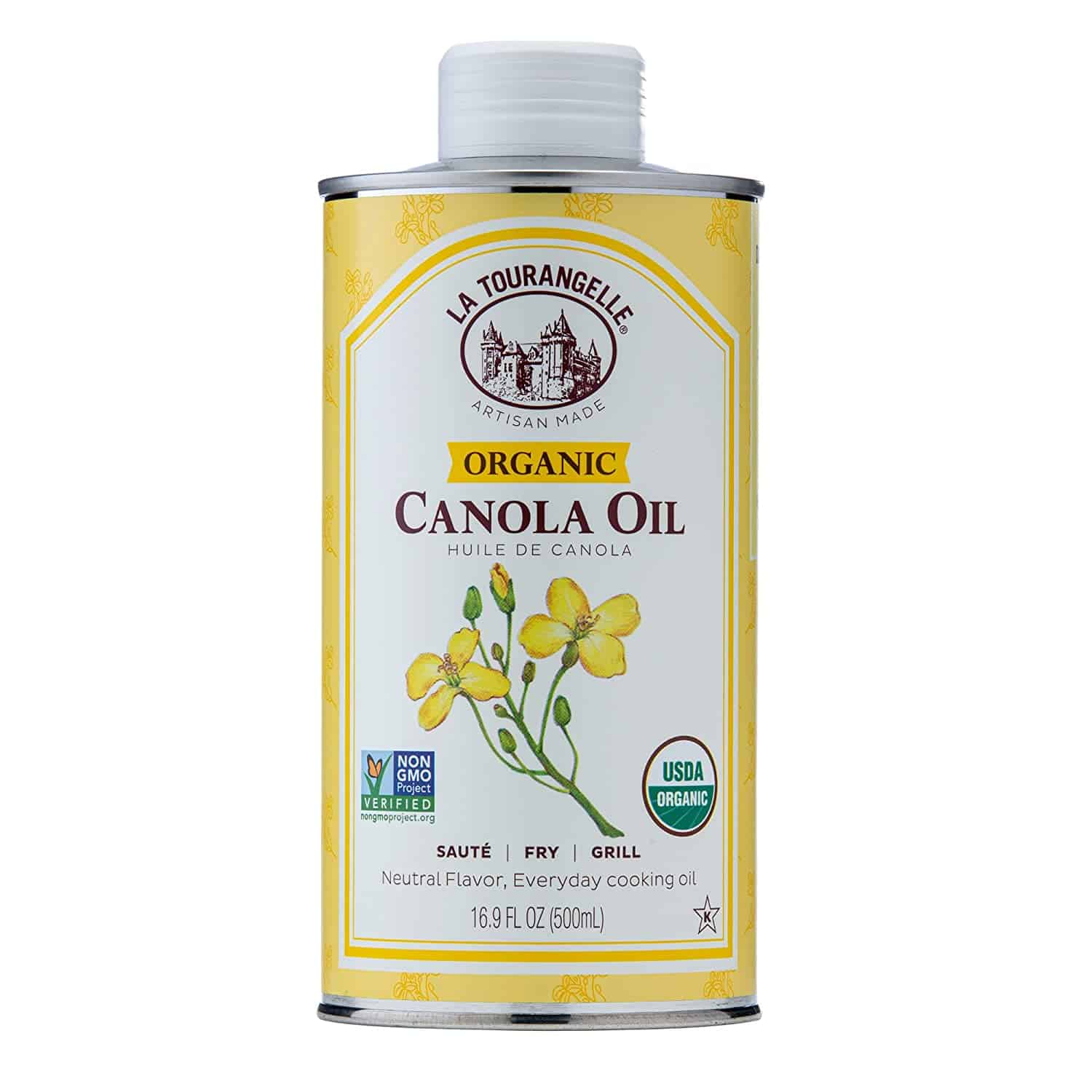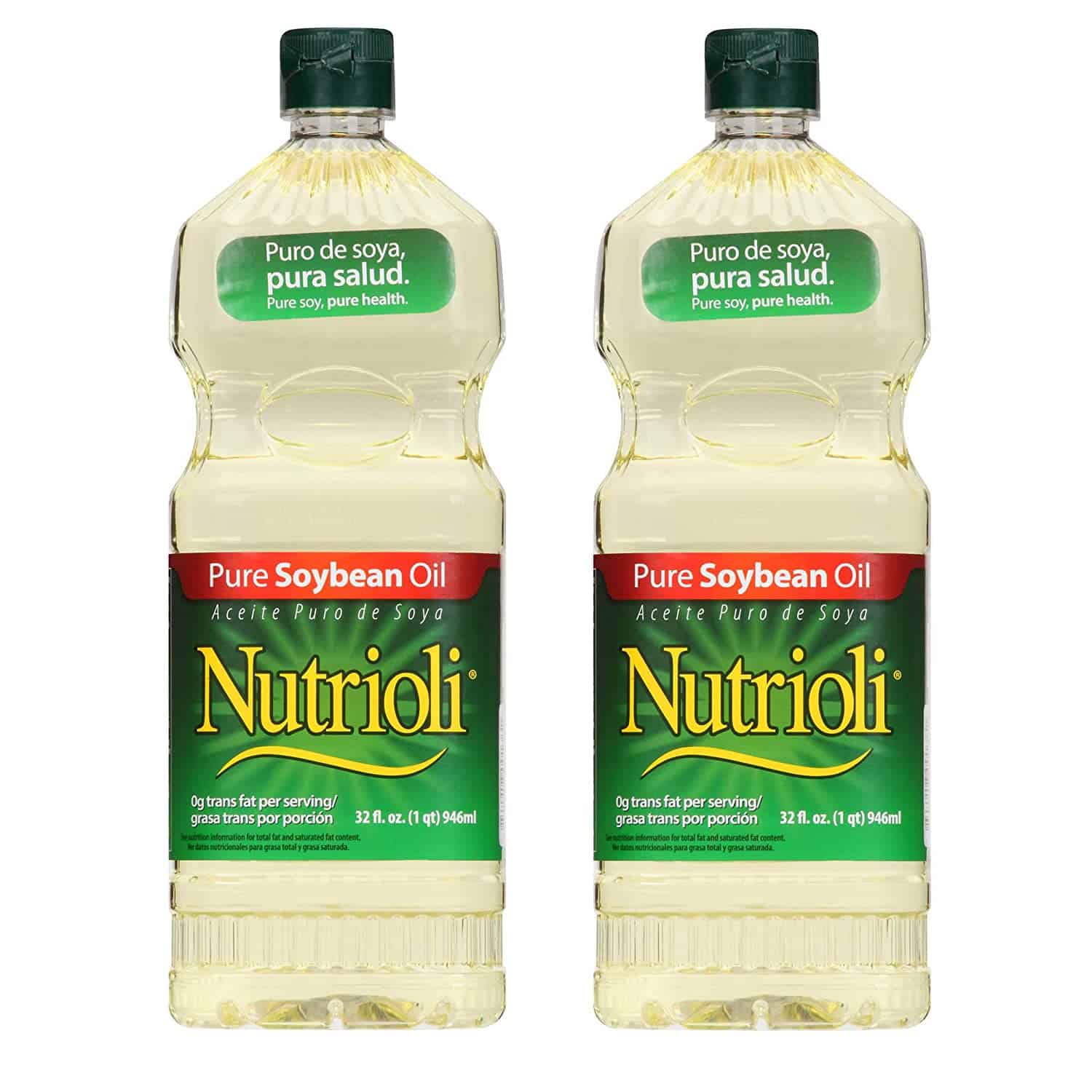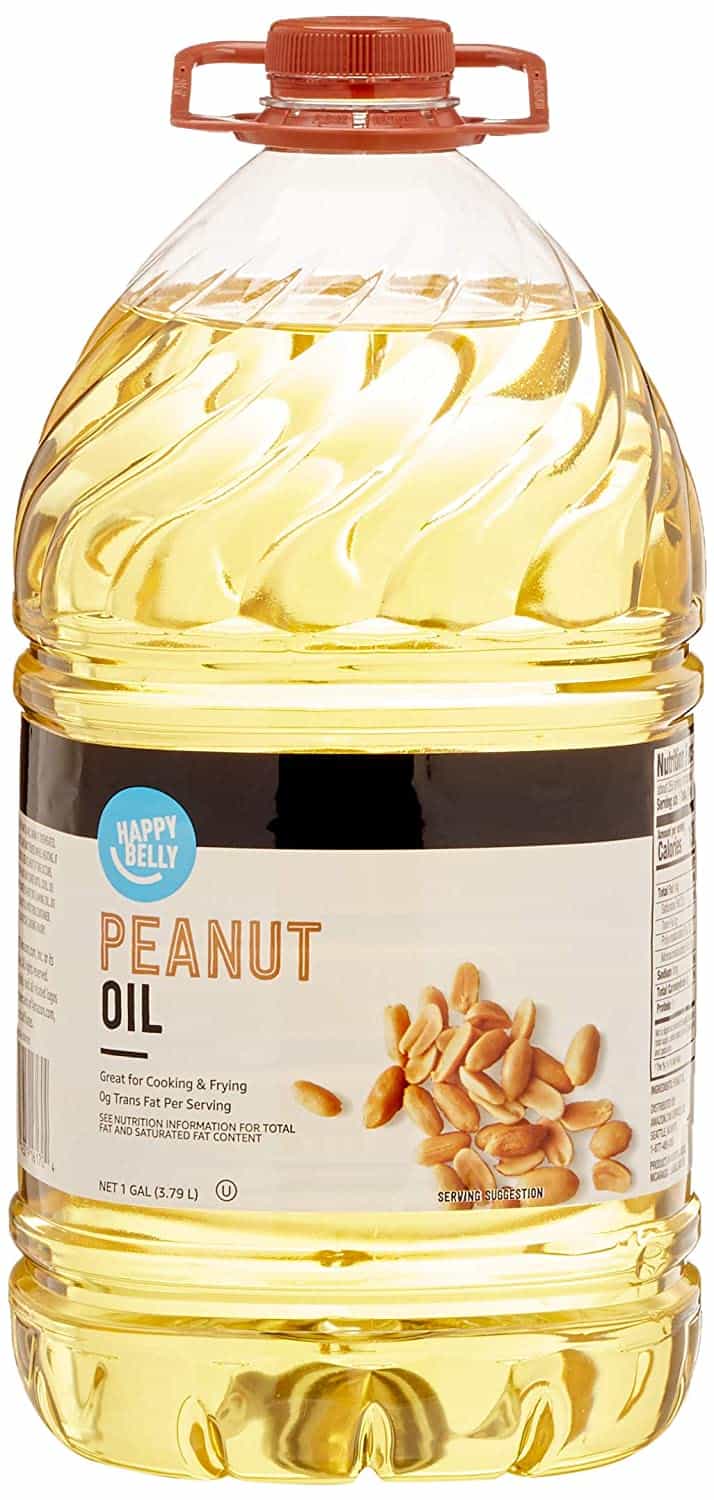Best deep-fried oil Chinese & Asian restaurants use for their dishes
What kind of oil to use to cook Chinese food, especially those delicious deep-fried Asian dishes?
Chinese cooking has used standardized vegetable oil and soybean oil. Peanut oil usually has a tasty nutty taste and is useful not only for stir-frying.
Canola oil with a high smoke point but a neutral flavor is my favorite choice, however, and these La Tourangelle organic oil canisters are my preferred brand to use because of their flavor profile and great reusability.

Chinese cooks normally use more soybeans vegetable oils and peanut oils, all with high smoke points.

Check out our new cookbook
Bitemybun's family recipes with complete meal planner and recipe guide.
Try it out for free with Kindle Unlimited:
Read for freeIn this post we'll cover:
Best oil for deep frying Chinese & Asian food
Overall best Asian deep-frying oil: Canola oil by La Tourangelle

Canola oil is among the cooking oils used by Andrea Nguyen to cook Asian dishes. Nguyen saves raw fat of roasted Peking duck and deep-fried Sichuan duck to fry up and cook again to make her signature dishes.
La Tourangelle is the perfect choice for serious cooks who can’t sacrifice quality. It’s based on artisanal approaches to canola oil: this one-liter jar is produced for home cooking, not huge dinners, but reusing it can actually increase the flavor for your dishes.
Expedited oils are excellent to bake with, as well as fry in bulk. The high temperatures of the oven can offer a little stronger flavor than some of the other competitors.
La Tourangelle uses expeller-pressed roasted canola oil that is non-chemical. Canola oil has a lower healthy fat content than oat oil or sunflower oil but has a good amount of Omega 6.
It’s safe to use such oil when cooking for someone who may be allergenic to peanuts. It is popular in Asian recipes for stir-fry and is also a good choice for roasting potatoes or an entire turkey.
Check out prices and availability here
Benefits
If you use canola oil which isn’t labeled organic or non-GMO you may have come across another food source than you anticipated.
Some by-products from the treatment of rapeseed into an edible oil are also sold for the animal food additives frequently employed in cattle or poultry production.
Canola oil can be processed to remove erucic acid, which would otherwise cause harmful taste and smell.
Rapeseed oil is inexpensive to produce but tastes and smells awful. Canola is low high in unsaturated fat and high in saturated fat.
With La Tourangelle you won’t have this issue.
Also read: best deep-fried Asian food you should try
Side effects
Canola oil is well known among health care professionals for its safeness which is generally recognized through the USDA.
Canola oil is probably the most controversial kind of oil. Its often promoted as a heart-safe oil and it’s great for people wanting to improve cholesterol.
It is tasteless so it is incredibly good for kids with a bit of pickiness. Canola is free of trans fat and is also a good baking substitute next to it’s use for deep-frying. It has a high smoke level, making it best for restaurants and anybody contemplating deep-frying.
Best traditional deep-frying oil: soybean oil by Nutrioli

Smoke in soybean oil is significantly greater than the usual cooking temperature. You can use these ingredients to cook any food without worrying it would break up.
Of course, you may need to stay alert while cooking even if you have left it on for longer. The temperature may slowly rise and soon smoke might begin producing itself. Even more so than with Canola oil, for example.
Soybean oils smoke point is between 234 and 263°C which is comparable to 453-493°F.
Best flavor add: peanut oil by Happy Belly

Peanut oil is an excellent choice for filling deep fryers due to its high smoke points. It usually develops fewer taste refractions on pans compared with other vegetable oils.
It also is ideal for creating the crispy texture we prefer for French fries and tempura. Peanut oil is a smoking point e.
If you’re going to use peanut oil for deep-frying, you’re not getting the premium stuff, that’s such a waste!
I would much rather have you use Amazon’s brand Happy Belly (which is quite good by the way) and get a little bit better bang for your buck.
Is deep frying in peanut oil healthy?
The oil used when making deep frying foods in the peanut is considered healthy in moderation as long as the oil used contains a low amount of saturated fat. Peanut oil is a plant-based fat with a high smoke point, putting it best for deep-frying. Deep frying is healthy as long as you buy oils with no saturated fat.
Unrefined peanut oil is high in antioxidant vitamins E protecting against free radicals and sterols but its benefit for human health is lost if it is processed or subjected to high temperatures.
Peanut oil versus other oils
Oils considered healthy generally contain less than 6 gram of saturated fat. The bulk of their weight comes from healthy monounsaturated and polyolated fatty acids.
Canola & sunflower oils have lower saturated fats. Comparatively fats like butter, lard, shortening margarine, coconut oil and sunflower oil have a higher fat density.
In contrast to healthy oils like canola, sunflower oil, and canola oil, a tablespoon of canola oil can have over 11.9g of fat per ounce in comparison.
How do I choose the best oil for deep frying?
The smoke point in crude oil is how quickly the oil is breaking apart after heating. At that temperature, oil begins to burn before catching fire with increased temperature.
When oil began to smoke, it began to taste ‘off’ and lost much of its nutritional value. When thinking about oil for frying, smoke point and aroma are important factors.
The smoke point is when the oil breaks down. That can give the oil a rancid smell that spoils the aroma of the food cooked in it.
The higher the temperature of the cooking the higher the smoke point.
What oil do Chinese restaurants use for deep frying?
To deep fry food, you need to use an oil with a high smoke point. A low smoke point like olive oil will burn and make the food taste awful.
One of the most popular deep-frying oils in Chinese restaurants is soybean oil, followed closely by vegetable oil. They are very ideal for cooking at high temperatures.
- Soybean oil has a high smoke point of 450 F/232 C
- Vegetable oil has a smoke point of Vegetable oil: 400–450 F/ 204–232 C
- Peanut oil has a high smoke point of 450 F/232 C and a slightly nutty flavor that’s great for deep-fried dishes
- Canola oil also has a smoke point of 400 F/204 C and it has a neutral flavor so it doesn’t affect the taste of the food.
Finally, I want to mention another good cooking oil that is popular in Asia: rice bran oil, which has a very high smoke point of 490 F/254 C.
Oils to skip when frying
Never use oil with a high level of burning. Butter (374°F) lard (374°F) and vegetable shorting also have low smoking levels. If your food has a buttery flavor, make it mix with a higher smoke intensity oil.
What foods can you cook in a deep fat fryer?
Basically, you can cook almost any type of food in a deep fat fryer. There’s no need to go to an Asian restaurant if you find easy recipes.
Here are some ideas you can make at home:
- seafood like shrimp, squid, oyster, clams, scallops, lobster tail, octopus
- meat like chicken, turkey, small birds, pork, beef
- vegetables like potatoes, root veggies, eggplant, snow peas, etc.
- dumplings
- eggs
- bread and dough
- crab cakes, croquettes
A nice golden-brown crust is the first sign that your food is well-cooked. It will taste delicious and have that perfect crisp when you bite into it.
Check out our new cookbook
Bitemybun's family recipes with complete meal planner and recipe guide.
Try it out for free with Kindle Unlimited:
Read for freeJoost Nusselder, the founder of Bite My Bun is a content marketer, dad and loves trying out new food with Japanese food at the heart of his passion, and together with his team he's been creating in-depth blog articles since 2016 to help loyal readers with recipes and cooking tips.
